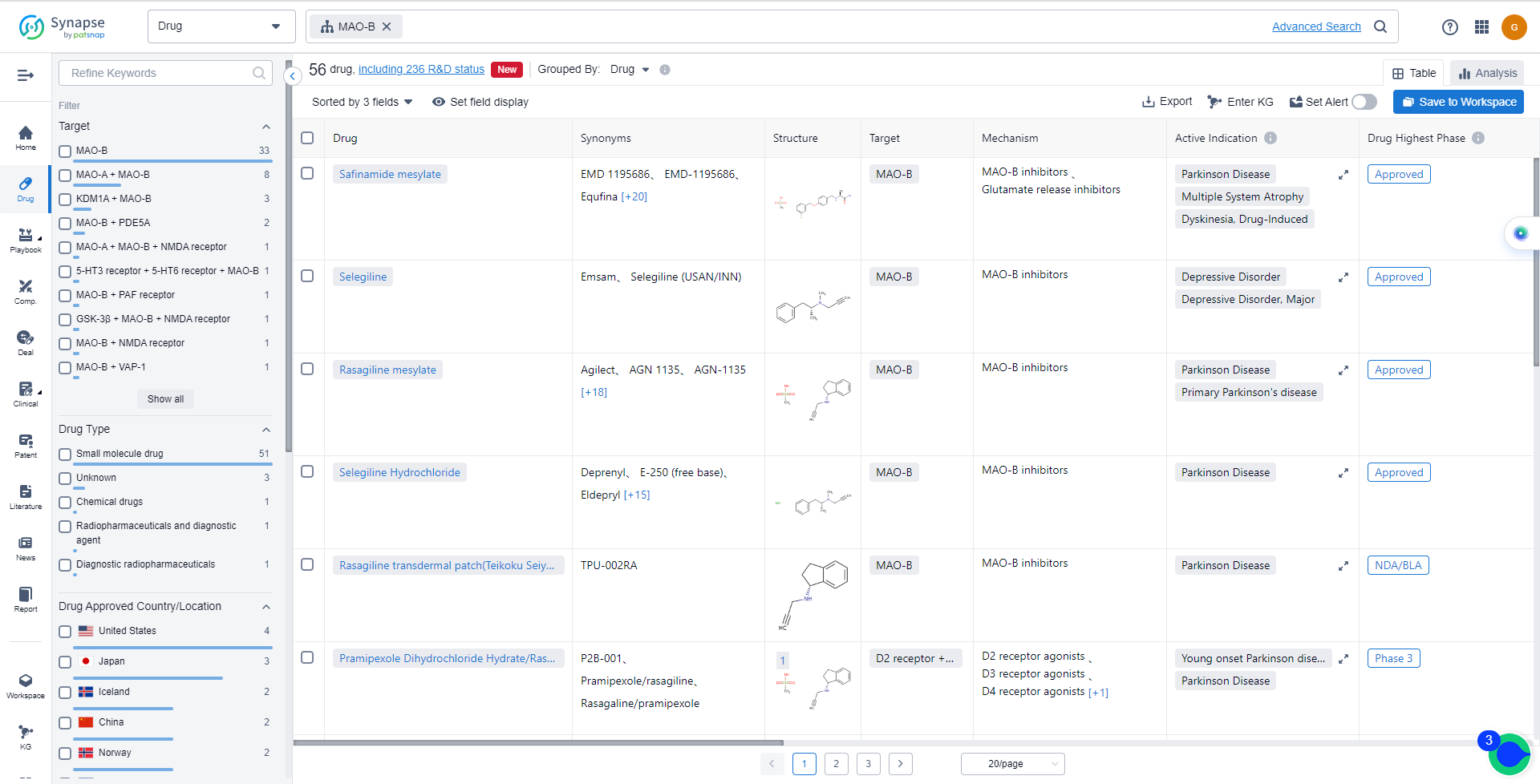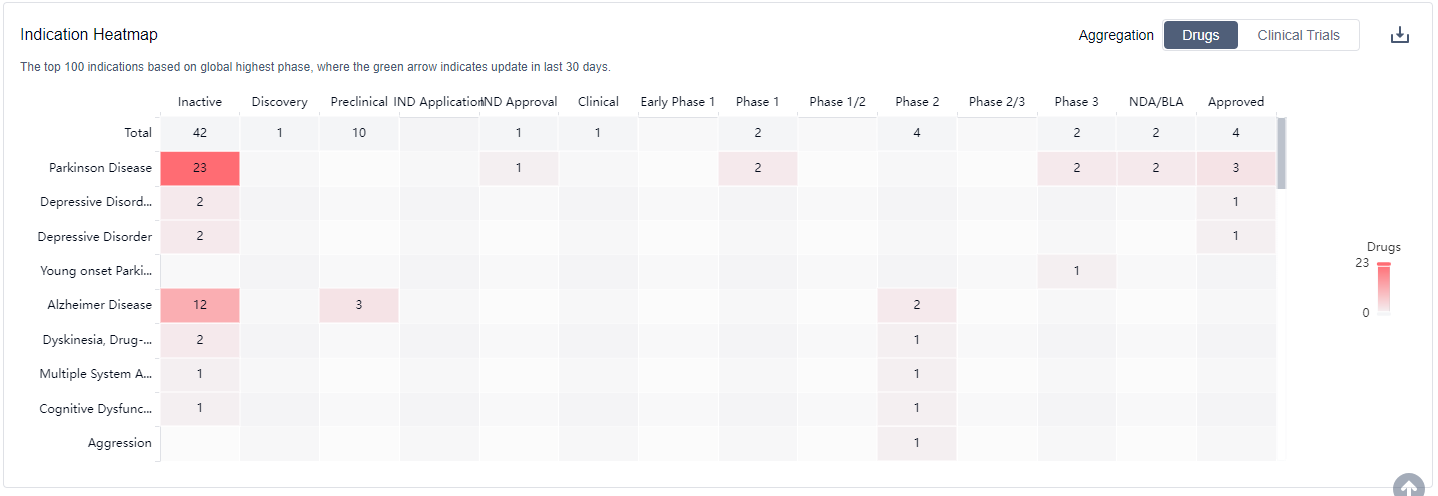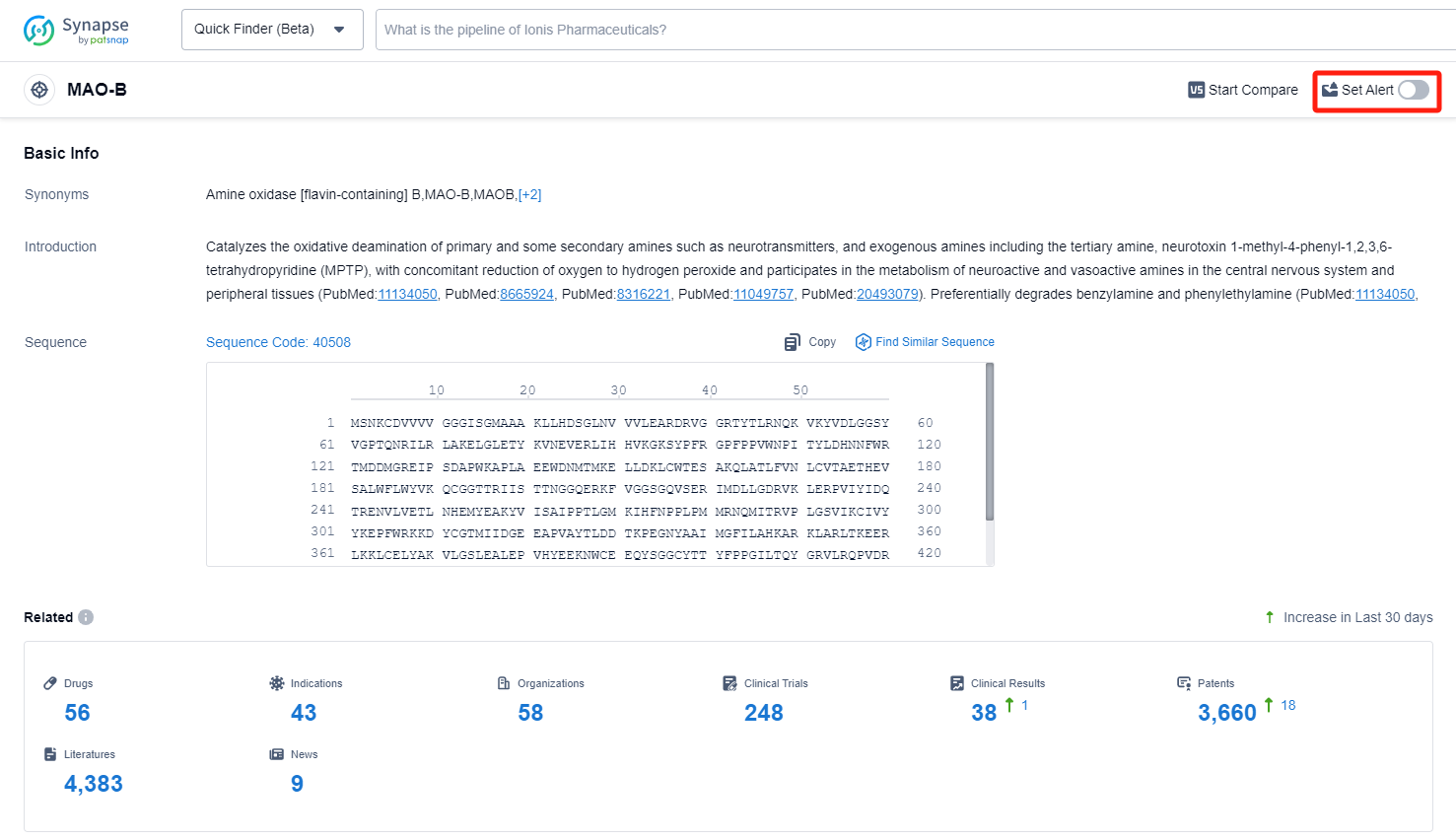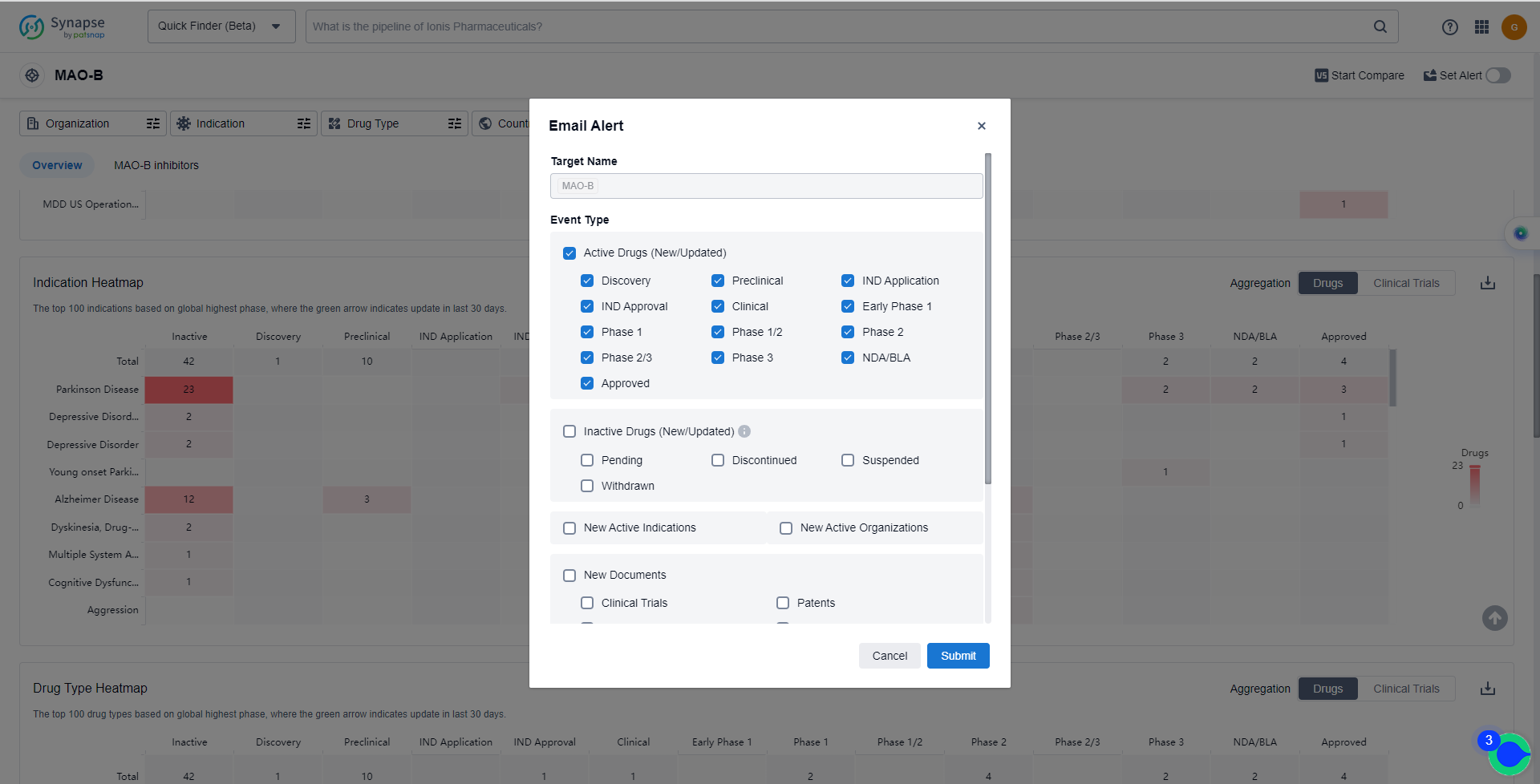Deciphering MAO-B Inhibitors and Keeping Up with Their Recent Developments
Monoamine oxidase-B (MAO-B) is an enzyme found in the human body that plays a crucial role in the metabolism of neurotransmitters such as dopamine. It specifically breaks down excess dopamine, preventing its accumulation and maintaining a balance in the brain. By regulating dopamine levels, MAO-B helps to control various neurological functions, including mood, cognition, and movement. Dysfunction or inhibition of MAO-B has been linked to neurodegenerative disorders like Parkinson's disease, as well as psychiatric conditions such as depression and anxiety. Understanding the role of MAO-B is essential for developing therapeutic interventions that target this enzyme to treat these disorders effectively.
The analysis of the target MAO-B reveals that Viatris Inc., Newron Pharmaceuticals SpA, Zambon Company SpA, Teva Pharmaceutical Industries Ltd., and FP Pharmaceutical Corporation are the companies growing fastest under this target. These companies have made significant progress in R&D, with Viatris Inc. having the highest number of approved drugs. Parkinson's Disease is the most common approved indication for drugs targeting MAO-B. Small molecule drugs are progressing rapidly, with several approved and preclinical drugs. The United States, Japan, and the European Union are leading in terms of approved drugs, with China also showing progress. The competitive landscape for target MAO-B is dynamic, with ongoing research and development efforts in various countries and indications. Future development in this area is expected to focus on expanding indications, optimizing drug types, and exploring new markets.
How do they work?
MAO-B inhibitors are a type of medication that specifically target and inhibit the activity of the enzyme monoamine oxidase type B (MAO-B). MAO-B is an enzyme found in the brain that is responsible for breaking down certain neurotransmitters such as dopamine. By inhibiting the activity of MAO-B, these inhibitors increase the levels of dopamine in the brain, which can help improve symptoms associated with certain neurological conditions.
From a biomedical perspective, MAO-B inhibitors are commonly used in the treatment of Parkinson's disease. In Parkinson's disease, there is a loss of dopamine-producing cells in the brain, leading to a decrease in dopamine levels. By inhibiting MAO-B, these medications help to preserve the remaining dopamine and alleviate some of the motor symptoms of Parkinson's disease, such as tremors and stiffness.
It's important to note that MAO-B inhibitors are different from MAO-A inhibitors, which target a different subtype of the enzyme. MAO-A inhibitors are primarily used in the treatment of depression and anxiety disorders. MAO-B inhibitors, on the other hand, are specifically designed to target the enzyme subtype involved in dopamine metabolism and are more commonly used in Parkinson's disease management.
List of MAO-B Inhibitors
The currently marketed MAO-B inhibitors include:
- Safinamide mesylate
- Selegiline
- Rasagiline mesylate
- Selegiline Hydrochloride
- Ladostigil
- Sembragiline
- Vafidemstat
- HEC122505MsOH
- 18F-FSL25.1188
- [18F]-D2-deprenyl
For more information, please click on the image below.
What are MAO-B inhibitors used for?
MAO-B inhibitors are used forParkinson's Disease. For more information, please click on the image below to log in and search.
How to obtain the latest development progress of MAO-B inhibitors?
In the Synapse database, you can keep abreast of the latest research and development advances of MAO-B inhibitors anywhere and anytime, daily or weekly, through the "Set Alert" function. Click on the image below to embark on a brand new journey of drug discovery!








